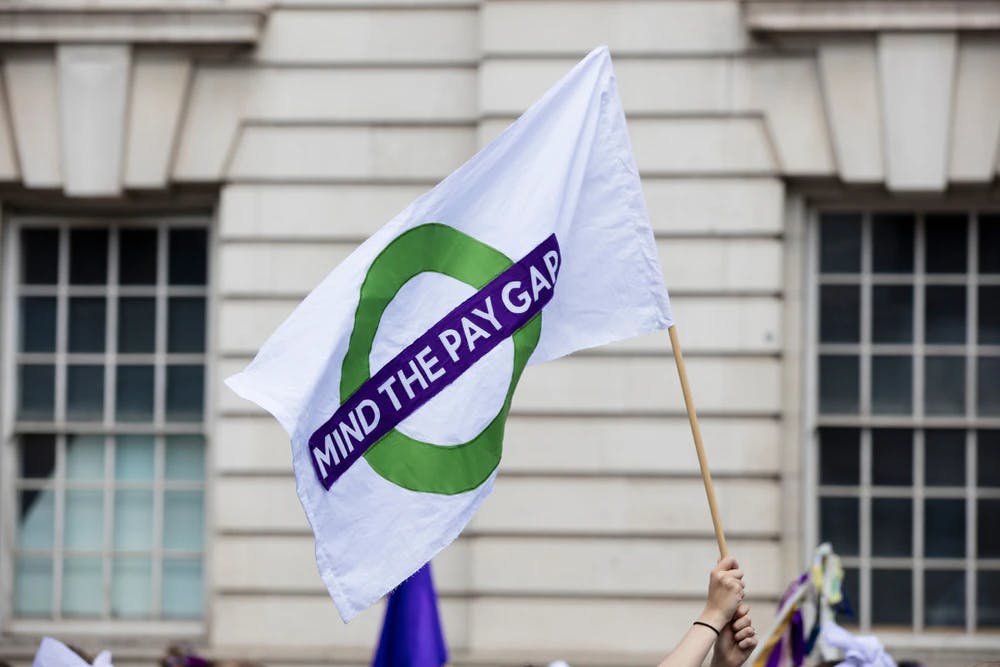Feminists Are Still Dishonest About The Gender Pay Gap, So Let's Settle This Once And For All
82 cents. 82 measly cents.

That's how much the Labor Department's statistics show the average woman earned for every dollar the average man earned in 2016. And that whopping 18% difference, known as the gender pay gap, has had many politicians and activists calling to ban paying women less than men for the same work. After all, in an age when most of us like to think of ourselves as standing for equality, doesn't it seem like a travesty that people's labor should be deemed less valuable based solely on their gender?
Well, that's at least the position that many in the fight for equal pay have taken. The pay gap has been a popular feminist talking point for decades, and since Hillary Clinton cited it during her 2016 presidential campaign, the issue has been brought back to the forefront of public discourse surrounding gender equality.
A Talking Point That's...Dishonest?
The truth is, however, that it actually has been illegal to pay men more than women for doing the same job for around 50 years. The Equal Pay Act of 1963 specifically bars sex-based wage discrepancies, and Title VII of the Civil Rights Act of 1964 more broadly outlaws sex-based discrimination. Paying a woman less than her male counterparts for doing the exact same work would land any employer in trouble with the federal government. However, as the numbers clearly show, it's still an undeniable reality that working men are out-earning working females. But if it's not due to discriminatory practices, then we have to wonder, what's causing the gender wage gap?
It actually has been illegal to pay men more than women for doing the same job for around 50 years.
To answer that question, it's first important to understand exactly what's being described when people say that "women earn less than a dollar for every dollar a man makes." It's often overlooked that when statistics compare the earnings of men to women, they're usually not referring to what men and women each make assuming they work the same job, with the same credentials, at the same type of company. Instead, the wage gap statistic simply compares the average earnings of all women to the average earnings of all men, regardless of variables like hours worked, occupation, education, or seniority.

Let's Break It Down
When we more closely examine the breakdown of men and women in the workforce, it turns out that personal choices have a lot more to do with the wage gap than any form of systemic discrimination. Although we should all, regardless of our genders, make whatever career decisions we believe best for ourselves, clear patterns and differences do exist in how men and women in general structure their work lives.
Personal choices have a lot more to do with the wage gap than any form of systemic discrimination.
The Data Says Choices Matter
One of the most easily measurable differences between women and men in the workforce is the number of hours that they work. The Bureau of Labor Statistics reports that, on an average day, men work 8.5 hours, compared to 7.6 hours for women. That may not sound like a substantial difference, but almost an hour more work (and pay) every day adds up over the months and is certainly a contributing factor to the gender pay gap.
Another discrepancy that needs to be discussed is the fact that men and women tend to gravitate toward different professions and industries. The jobs that individuals choose for themselves contribute to the pay gap since women are mainly working in fields that aren't as financially lucrative as what men are opting for.
Women are mainly working in fields that aren't as financially lucrative as what men are opting for.
A good example of this is a comparison of the majors that are most popular among men and women in university. According to the Department of Education, the average salary for the top 20 most popular majors for women in 2016 was $52,800. While that's no small sum, it's still nearly $10,000 less than the average salary for the top 20 most popular majors for men ($62,060).
You Don't Get What You Deserve. You Get What You Negotiate
When it comes to the gender pay gap, the role of salary negotiations can't be ignored. In one now-infamous interview, a discussion of the gender wage gap prompted clinical psychologist Dr. Jordan Peterson to suggest that because women are on average more "agreeable" than men, they are also, therefore, less competitive or confrontational in the workplace. At the time, the interviewer Kathy Newman scoffed at this idea. But, not only are there indeed well-documented differences in the presence of agreeableness among the sexes, there's also additional evidence showing that women are, in fact, more passive at their jobs.
Women are, in fact, more passive at their jobs.
When it comes to salary negotiations, in particular, one 2016 survey of over 2,000 Americans adults found a stark difference between the genders. 68% of women said that they had not initiated salary negotiations in the current or last job, a full 16% more than the just 52% of men who reported the same. Salary negotiations are an essential part of determining our earnings, since organizations often post job salaries that are lower than the amount they would actually be willing to pay for the right candidate. By being more likely to accept initial offers, without any negotiation efforts at all, many women are undervaluing their own work and missing out on extra earnings.
Why Education Is Key
While individual instances of discrimination may absolutely exist, the law and data simply don't support the idea that our society as a whole values women's work less than men's. And though the people who fight for "fair pay" may have women's best interests at heart, trying to slay the non-existent bogeyman of systemic, sexist workplace discrimination has some potentially negative consequences. Convincing women that the system is biased against them is hardly the way to inspire them to succeed in the workplace, because after all, doesn't it seem futile to invest time playing a rigged game? Additionally, efforts to legislate equal pay measures that already exist could be much better spent addressing the real issues at the heart of the pay gap.
Convincing women that the system is biased against them is hardly the way to inspire them to succeed in the workplace.
As both an egalitarian and a capitalist, I love the idea of women using their talents to help provide for their families. So why not spend more time educating students – of both genders – about the reality of things like salaries and working hours when it comes to their future careers? If financial security is something young women and men are concerned about, they should have the tools and knowledge to compare different paths before making educational and work choices that affect the rest of their lives. Furthermore, based on the numbers, it looks like all Americans, but especially women, need to become familiarized with how important salary negotiations are in the job market.
Closing Thoughts
Blaming systemic, sex-based discrimination has become the default response for many women who feel like they aren't reaching their full earning potential. But failing to address the choices that we as women make that contribute to the pay gap is unlikely to bring any meaningful change to our work lives. Victimhood is not a good look, and it's certainly not empowering. The most empowering thing we can do is recognize that higher salaries are out there, but it's up to us to chase them.